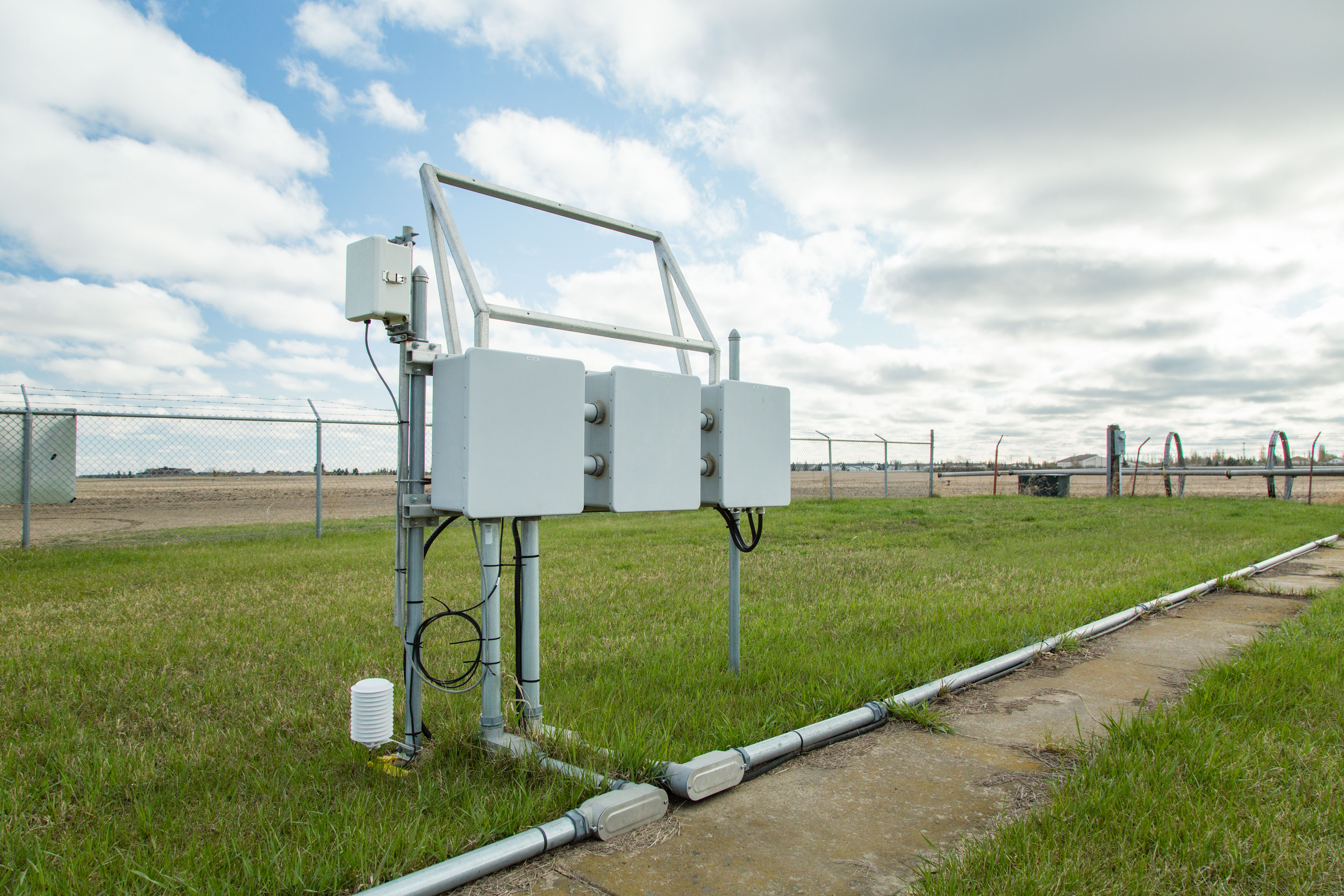Saskatoon, SK – After Saskatonians endured an incredibly long, snow-covered winter, the 6th coldest winter and the 3rd coldest April in the last fifty years, the weather has become more than just a topic on coffee row. Climate data and trending information has become invaluable and is used in every sector of the economy, allowing companies and individuals to make informed decisions.
The Saskatchewan Research Council’s (SRC) Climate Reference Station (CRS), located in a field near the South Saskatchewan River, has been collecting important climate data in Saskatoon for 50 years. During that time, it has tracked all sorts of extreme climatic conditions, including temperatures as high as 41.0 C and as low as -43.9 C. It has also measured 99.4 mm of rain falling in one day. And it has recorded snow falling in Saskatoon every month except July. Illustrating just how quickly things can change, 2012 was the fourth wettest year on record with 501.1 mm of precipitation, but it also had the 2nd driest winter with 13.5 mm of precipitation.
“This is a huge milestone not only for the Climate Reference Station but for the city of Saskatoon,” said SRC Vice-President of Environment Joe Muldoon on behalf of SRC President and CEO Dr. Laurier Schramm. “The fact that people in Saskatoon have access to this kind of quality information in a time and place where weather can change dramatically in one day, let alone over 50 years, is incredibly valuable."
The CRS is a principal climate reference station that takes air temperature, precipitation, humidity, wind and atmospheric pressure readings. It supplements these readings with rainfall rate, soil temperature, snow depth, bright sunshine and solar radiation observations. It is the only station of its kind in Saskatoon and one of three like it in Saskatchewan.
“Saskatchewan’s weather is always changing, but our Climate Reference Station has been remarkably consistent in providing accurate climate measurements for half a century and that is something to celebrate,” says SRC Climatologist Virginia Wittrock. “We are looking forward to many more years of obtaining valuable climatic information to meet the needs of new clients and our long-time supporters.”
The station provides data to governments, universities, insurance agencies, agriculture sector clients and a wide variety of other clients. It is also a valuable research tool for evaluating long-term climate trends.
SRC has a second principal climatological reference station located at the Conservation Learning Centre, 18 kilometers south of Prince Albert, SK. Watch our video to find out more about some of the climate-related work SRC does on SRC's Youtube Channel.

